Killer Shrimp, Freshwater Shrimp and Bloody Red Shrimp
Table of contents:
- Aquatic invaders
- Pathways of invasion
- Threats to the environment, the economy and society
- Focus on an invader
- What you can do
Aquatic invasive species in Quebec
Killer Shrimp
(Dikerogammarus villosus)
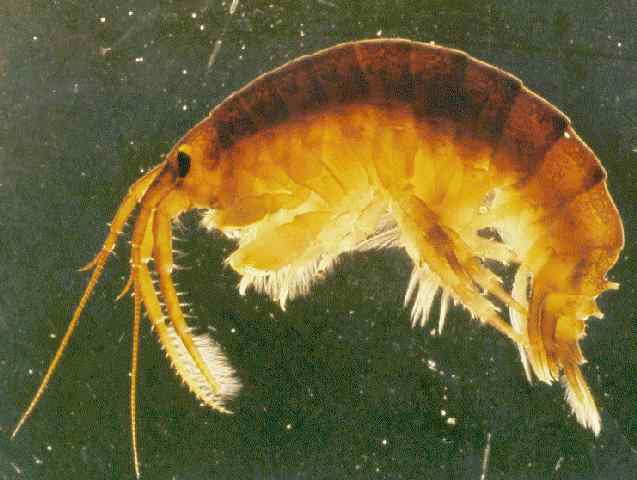 Photo credit: S. Giesen
Photo credit: S. Giesen
Freshwater shrimp (scud)
(Echinogammarus ischnus)
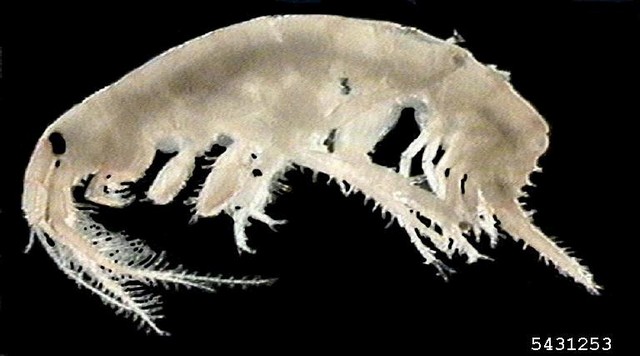 Photo credit: Colin van Overdijk Bugwood.org
Photo credit: Colin van Overdijk Bugwood.org
The Killer Shrimp and Echinogammarus ischnus (Freshwater Shrimp) are 2 small invasive scuds (gammarids). They have the appearance of curved shrimps with laterally compressed bodies.
Characteristics
| Killer Shrimp | Freshwater Shrimp |
|---|---|
|
|
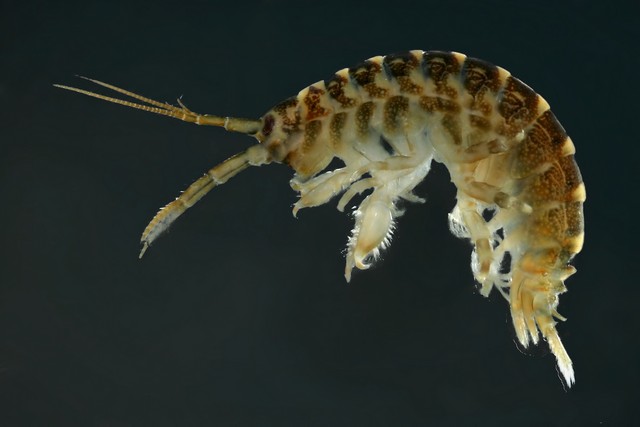 Photo credit: Michal Grabowski
Photo credit: Michal Grabowski
 Photo credit: Colin van Overdjik Bugwood.org
Photo credit: Colin van Overdjik Bugwood.org
Origin
These 2 species are native to the seas located in the centre of Europe and Asia. The Killer Shrimp has not yet been recorded in North America. However, E. ischnus was first observed in the Detroit River in 1994. It was introduced through ballast waters from ocean-going vessels. Through watersports and recreational fishing, it has since spread to the Great Lakes and the Upper of the St. Lawrence River. It was found near Gentilly in 2010.
Habitat
The Killer Shrimp and E. ischnus are species found in lakes and rivers, where the current is weak or moderate. They are able to live in both fresh and brackish waters because they can tolerate large variations in temperature and salinity. They usually colonize rocky, gravelly or shell-strewn bottoms that provide shelter. E. ischnus can be found on bottoms with sand and clay, near solid surfaces like docks and submerged structures.
Similar species
The Killer Shrimp and E. ischnus resemble several native gammarids such as Gammarus fasciatus. It is very difficult to tell them apart without a microscope and, usually, only experts can do it.
Gammarus fasciatus
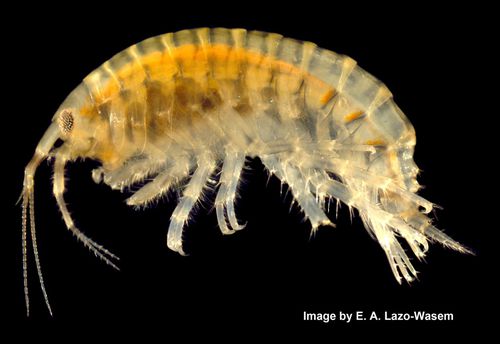
Photo credit: Yale Peabody Museum of Natural History, Eric A. Lazo-Wasem
Bloody Red Shrimp
(Hemimysis anomala)
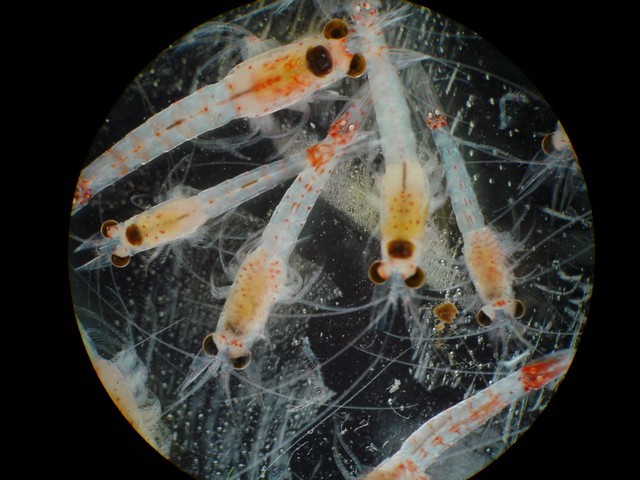 Photo credit: S. Pothoven Great Lakes Environmental Research Laboratory
Photo credit: S. Pothoven Great Lakes Environmental Research Laboratory
Characteristics
- females up to 1.7 cm and males up to 1 cm
- large, prominent black eyes
- square tail with 2 spines at the end
- red or orange body, partly translucent with pigmented red sports; colour varies depending on the light and water temperature
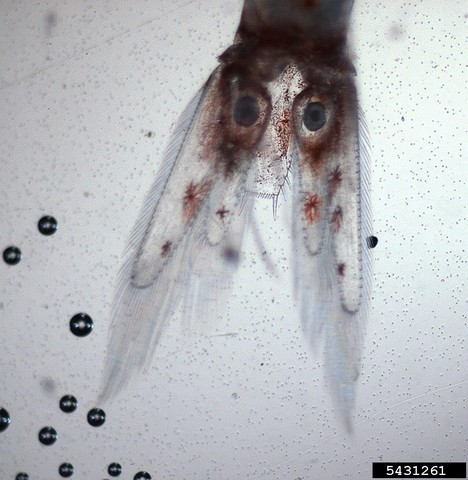 Photo credit: DFO Bugwood.org
Photo credit: DFO Bugwood.org
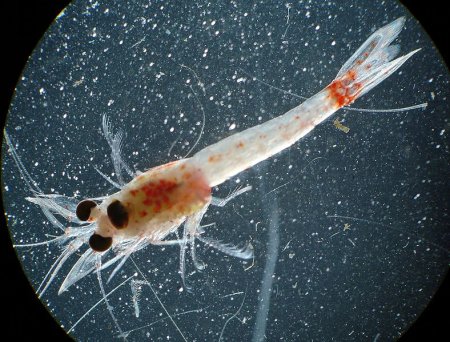 Photo credit: National Oceanic and Atmospheric Administration
Photo credit: National Oceanic and Atmospheric Administration
Origin
The Bloody Red Shrimp is a small crustacean native to the coastal regions of the seas of central Europe. It was first intentionally dispersed in Europe between the late 1940s and the 1980s to increase fish productivity. Its dispersion continued via ballast waters of ocean-going vessels. It then ended up in the Great Lakes, except Lake Superior, as well as the St. Lawrence River since 2008.
Habitat
Although it can tolerate brackish waters, the Bloody Red Shrimp lives mostly in fresh waters with weak or moderate currents. It is often found near docks, ships, and maritime structures, finding refuge in bottoms strewn with rocks and shells. It moves in swarms and can shift very quickly when disturbed. During the day, the Bloody Red Shrimp migrates in deep water to avoid light and rises to the surface at night to feed on insect larvae and plankton.
Similar species
The Bloody Red Shrimp resembles a native shrimp found in the Great Lakes, the Opossum Shrimp (Mysis diluviana). However, the tail of the Opossum Shrimp is forked. Using a magnifying glass helps to see this difference.
Opossum Shrimp
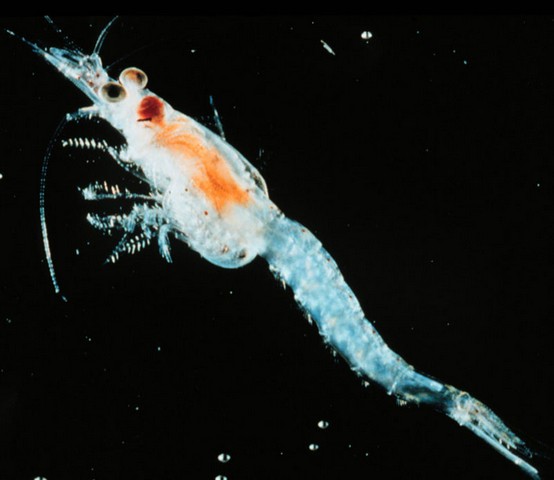
Photo credit: National Oceanic and Atmospheric Administration, Great Lakes Environmental Research Laboratory
- Date modified: